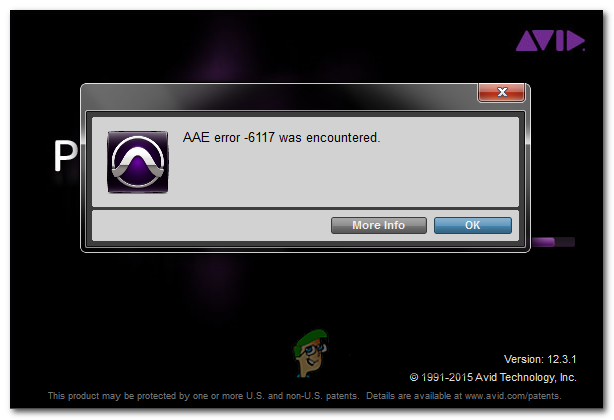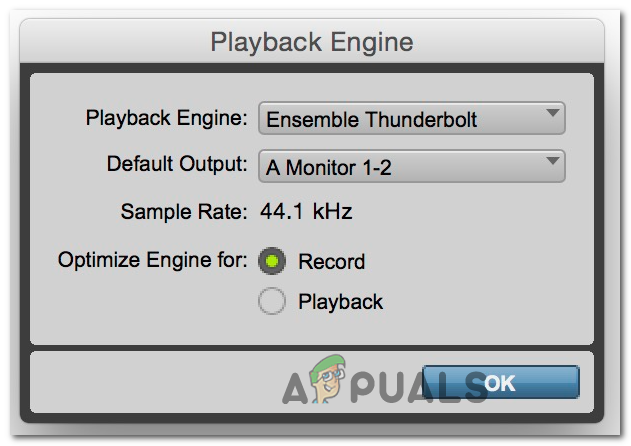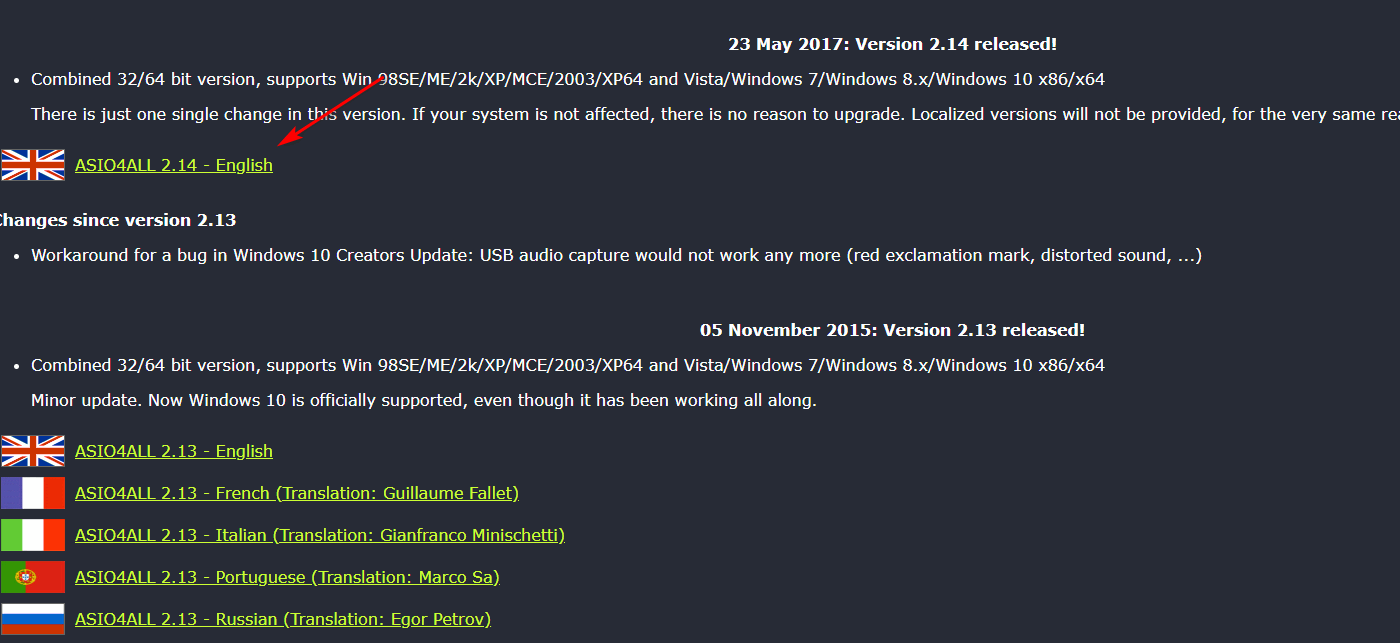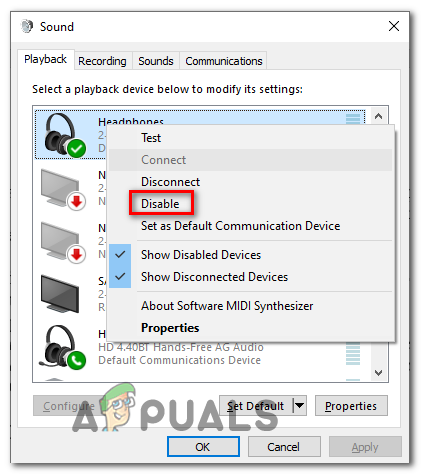How To Fix Pro Tools ‘AAE Error – 6117’
Some Windows users are reporting that they end up seeing the ‘AAE Error -6117’ message when attempting to get the Pro Tools program to load. Other users are reporting that they see this message when attempting to open up the PlayBack Engine menu (by pressing N key on the splash screen).

This error code essentially means that the audio device could not be initialized. In most cases, this problem will occur due to a missing driver for the interface that you’re attempting to use.
When troubleshooting this particular issue, you should start by attempting to force the PlayBack Engine window immediately after you launch the Pro Tools application. In most case, this will allow you to avoid a potential conflict between a recording or playback device and Pro Tools.
As it turns out, this problem can also occur if you’re missing a mandatory audio interface driver. In this case, you can either install it from the official AVID interface download page or (in case there’s no driver for your model) you can replace the official interface driver with the ASIO4All driver.
However, there are some instances where the conflict between Pro Tools and a playback / recording device can simply not be avoided. If this scenario is applicable, you can circumvent the error by disabling every sound & recording device prior to launching PRO Tools.
Method 1: Forcing the Playback Engine window
Before you move down to any of the other fixes below, you should start by checking whether or not you can force the Playback Engine window to appear at the initial splash screen of Pro Tools.
Note: It might help if you force Pro Tools to open with admin privileges. To do this, right-click on the Pro Tools launcher and choose Run as administrator from the context menu.
Some users that where also dealing with the error -6117 have reported that they’ve been able to circumvent the error code entirely by pressing the N key immediately after launching PRO Tools.
This should end up bringing up the Playback Engine window that will allow you to select your AVID device.

If this screen pops up, go ahead and select your Avid device, then click OK and see if you can use PRO Tools normally.
In case you still end up seeing the same error -6117 or the Playback Engine window doesn’t come up at all, move down to the next potential fix below.
Method 2: Installing the Audio Interface Driver
As it turns out, the most common cause that will cause this particular error code is a missing audio interface driver (most commonly, an Avid interface driver). Because of this, you should start this troubleshooting guide by ensuring that you’re using the latest audio interface driver.
If you’re using an Avid interface driver and you don’t have the latest version, you should be able to fix this problem by downloading & installing the latest iteration from their official download website.
If you’re looking for complete instructions on how to do this, follow the instructions below to update your audio interface driver to the latest version:
- Visit the official download page of Avid and expand the drop-down menu associated with Pro Tools HD Interface and Device Drivers.
- Next, select look for the correct Avid interface driver according to the device that you’re currently using and initiate the download.

Downloading the latest Avid interface driver - Once the download is complete, extract the contents of the archive you just downloaded, then double-click on the executable and follow the on-screen prompts to complete the driver installation.
- After the installation is complete, restart your computer if you’re not automatically prompted to do so.
- Once the next startup is complete, open Pro Tools and see if the error -6117 is now resolved.
If updating your interface driver didn’t fix the issue for you or you already had the latest version, move down to the next potential fix below.
Method 3: Install ASIO4All
In the event that a dedicated interface driver is not available for your model or you’re using built-in audio hardware on a PC, the best fix in your case is to install ASIO4All.
ASIO4all is a software that emulates ASIO, making it possible to use DAWs without an external component. Several affected users that deployed this fix have reported that on top of fixing the error with Pro Tools, this also ended up solving their latency problems.
Here’s a quick guide on installing this program on your Windows computer:
- Visit the official download page of ASIO4All, then download and install the latest version of ASIo4All driver by clicking the appropriate hyperlink according to your language of choice.

Downloading the latest version of ASIO4All - After the download is complete, go ahead and open the installation executable and click yes when you’re prompted by the User Account Control (UAC).
- Next, follow the on-screen prompts to complete the installation of the ASIO4All driver.

Installing the ASIO4ALL driver - Once the installation is complete, restart your computer and see if the problem is resolved at the next startup by attempting to open Pro Tools again.
In case the same error -6117 is still appearing at the initial splash screen of Pro Tools, move down to the next method below.
Method 4: Disabling all Sound & Recording Devices (PC Only)
If you’re encountering this problem on a Windows computer, you might expect to see this error code due to a conflict between your ASIO-powered device and the build-in sound devices.
Several affected users facing the same problem have confirmed that they’ve been able to fix the problem by accessing the PlayBack Devices screen and disabling every sound & recording device that’s currently connected before running the Pro Tools utility again.
If this workaround works, you can re-enable every disabled sound & recording device (while Pro Tools is running) and use the audio suite normally.
Here’s a quick guide on disabling all sound & recording devices from the Playback Devices menu before running Pro Tools:
- Press Windows key + R to open up a Run dialog box. Next, type ‘control mmsys.cpl sounds’ inside the text box and press Enter to open up Sound screen.

Accessing the Sound setting menu via Run box - Once you’re inside the Sound window, go ahead and access the Playback tab. Next, go ahead and right-click every sound device that’s currently enabled and choose Disable from the context menu.

Disabling every Playback Device - Once every Playback device has been disabled, select the Recording tab above and repeat the same procedure as above until every Recording device is disabled.
- After you successfully disabled all the Playback and Recording devices, go ahead and attempt to open the Pro Tools suite again.
- If there’s no error in sight, and you manage to get past the initial splash screen, go ahead and reverse engineer the steps above and re-enable every disabled Playback and Recording device.
- Use Pro Tools normally as the devices should be detected inside the tool as soon as you re-enabled them.




